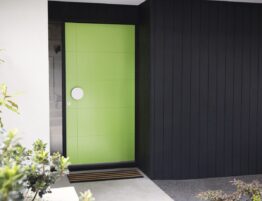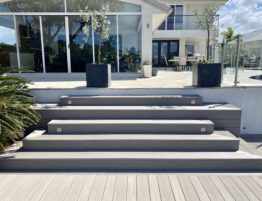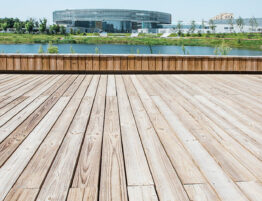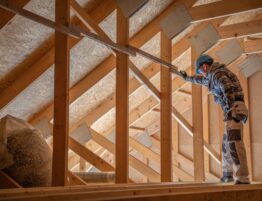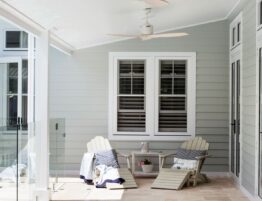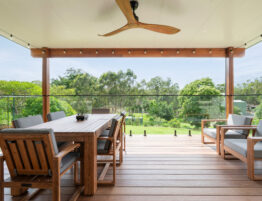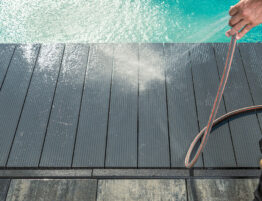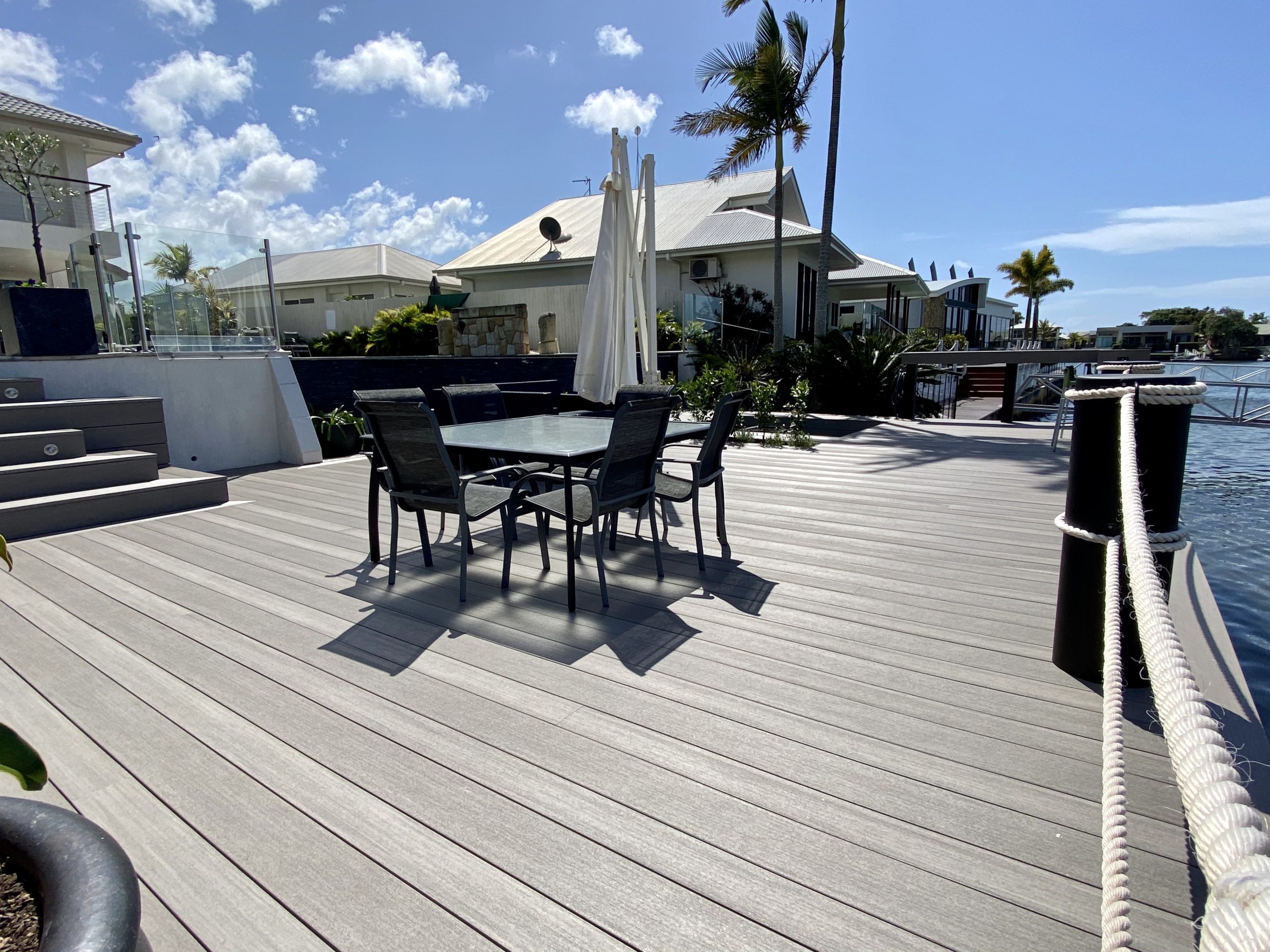
Looking to build a deck for hosting barbecues, pool parties, or just a place to relax and lounge outside?
This is your guide on everything to consider around your composite deck, from building to installation. Whether you’re thinking of hiring someone, or trying to do it yourself, knowledge is power—we’re here to equip you with everything you need to know.
Average Price per Square Metre (sq m)
When you’re looking at composite deck cost, the main way cost is measured is around $150 to $350 per square metre, which is an approximation of how much you’d be paying for the boards, the materials, and labour costs
Depending on how big you want this project to be, these costs can ramp up to be quite expensive. If you’re on a budget, we’ll break down where these prices are coming from.
Can I build a deck myself?
Now, before you pick up any tools—check your government website.
Different Australian states have different laws in regard to deck building. In some states, you may need to buy a license, acquire a permit, or hire a registered building practitioner. There may also be limits on the size of your deck you’re allowed to build.
What is composite decking?
Composite decking is a type of wooden board used for outdoor decks, verandas, and patios. The boards are made out of a combination of timber pulp/fibres and plastic. This combination makes up the core of the board, while the exterior, referred to as a “cap”, is made of a synthetic polymer material that acts as a protective shell around the board. This blend of materials makes the boards tough, durable, and easy to maintain.
Composite decking is also a popular alternative to real timber. This is because they can last for decades without being replaced, can emulate the colour and texture of real timber boards, and are a great choice for improving the property of your home.
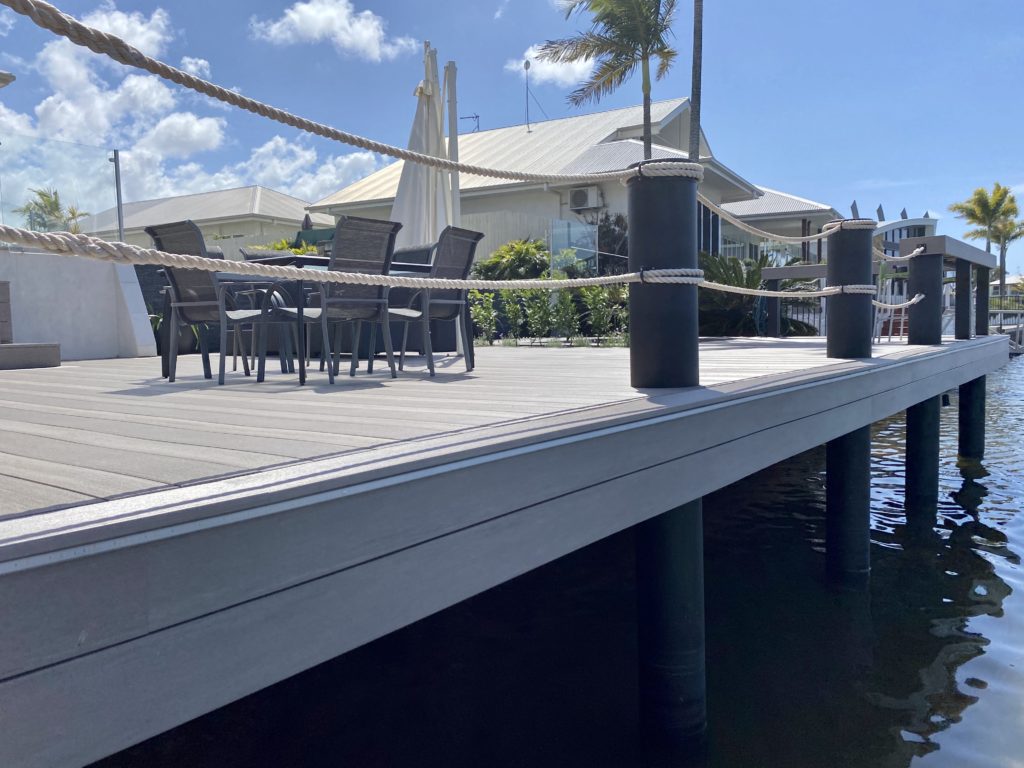
Benefits of composite decking
While you may be considering cheaper timber for your deck, composite boards save you money in the long run due to their low maintenance. Here’s how:
- Real timber is susceptible to mould, pests and rot, but composite decks have no such requirements.
- Due to their special manufacturing, composite deck boards also don’t need any sealant, as they are already moisture resistant. Going with a composite deck saves you hundreds of dollars in treating the wood.
- You also save on cleaning costs. While genuine wood and timber decks require regular cleaning and oiling, composite decks only need to be pressure washed once a year.
Types of composite decking
There are two main types of composite boards to choose from when installing a deck.
Uncapped
Uncapped composite boards are the cheapest type of composite board in the market, priced around $45 to $100 per square metre.
However, being uncapped means that it doesn’t have a protective coating. Due to the lack of protection, the board is prone to many kinds of degeneration, such as being susceptible to mould, rot, splitting, and crumbling due to the wet weather or harsh UV light from the sun.
So while uncapped boards may seem effective in the short term, it could cost you more in the long run as they don’t last for a long time, and have the same protection (or lack thereof) of regular wooden boards.
Capped
Meanwhile, capped composite boards cost around $100 to $250 per square metre. While more expensive, capped composite boards are coated in a protective film made from a polymer blend that prevents moisture from seeping in, as well as being eroded by harsh sunlight.
This means that your boards can last years, if not decades, with proper care. While they are a higher cost, we believe they’re worth investing in the long term.
To summarise, when it comes to comparing prices, the most important thing you want to think about is longevity and how long you want your deck to last.
Installation Costs
We understand the urge of dodging a high installation cost from a tradie, but building a composite deck is more than just buying composite wood. It involves acquiring tools, building material, ground prep, joists, and fasteners, which are also factored into the construction. If you’re a frequent DIY-er, you might have some of these materials on hand already, but if not, you’ll have to consider these materials into your cost.
Ripping Out Old Deck Boards: If you have a pre-existing deck, you’ll need to rip out the old boards.
Digging and Leveling: It is crucial that the ground be levelled properly so that the deck is on an even surface and also allow
Tools: You’ll need multiple specialised tools such as a power saw to cut the boards to length, fasteners and screws to construct the frame, power drills to create holes for screws.
Footings: Depending on the kind of deck you’re building, you’ll also need concrete and a shovel to build concrete footings to make sure your deck can properly support weight and withstand moisture and rot.
Building a Frame: You’ll need to also build a wooden frame made up of joists to build the deck on, which will require buying wooden boards under than the composite boards.
Labour Hire Cost
There’s no shame in getting help. A deck builder can bring a lot of value to a project. They have the benefit of already owning the necessary tools and experience on building these decks as they have done it many times before.
The amount they charge depends on the scale of the project, how much the area needs to be prepared beforehand, and also where you live, as contractors in urban-dense areas tend to have higher rates. Generally the cost of labour can be between $170 to $210 per square metre of deck.
The good thing about contracting a tradie, even if you already have the bulk of the tools and materials, is they can provide guidance in the moment and to avoid common pitfalls to do with safety or technique, or avoid mistakes that can cost you in the long run, such as how to make sure there’s proper drainage in your deck.
Conclusion
At Trade Builders Supplies, we understand how overwhelming it can be to choose the right composite deck brands, tools, and safety measures. That’s why we’re more than happy to lend a hand and give our expertise on your project. Contact us, and we can help you bring your project to life, recommending composite decking that’s appropriate to your lifestyle, its function around your home, and is within your budget. We also have case studies showing off our past success stories that demonstrate what can be possible not just with composite decking, but also by working with us.


